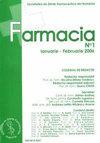THE ANALGESIC PROPERTIES OF THE FLAVONOID GALANGIN IN EXPERIMENTAL ANIMAL MODELS OF NOCICEPTION
IF 1.4
4区 医学
Q4 PHARMACOLOGY & PHARMACY
引用次数: 0
Abstract
This study aimed to investigate the antinociceptive properties of galangin using various nociception models. Galangin's effects were assessed across different doses (50, 100, 150, and 200 µg/kg bw) in mice through multiple pain tests. The results were compared to those of mice treated with acetylsalicylic acid or morphine, with or without naloxone. In addition to standard pain models, capsaicin-and glutamate-induced tests were employed to explore the involvement of the vanilloid and glutamatergic systems in galangin's pain-relief mechanisms. It was found that galangin exhibited a significant, dose-dependent reduction in pain behaviour during the acetic acid-induced writhing test, with a 72.2% inhibition observed at a 200 µg/kg bw dose. In the hot plate test, it increased latency period, with a 72.0% increase at the same dose. Galangin also significantly inhibited both neurogenic and inflammatory phases in the formalin-induced paw-licking test. These effects were reversed by naloxone treatment, indicating opioid system involvement. Galangin further showed inhibitory effects on neurogenic nociception induced by capsaicin and glutamate. Enzyme-linked immunosorbent assay (ELISA) revealed that galangin, at doses of 100 and 200 µg/kg bw, significantly reduced pro-inflammatory cytokine levels (IL-1β, TNF-α, IFN-γ, and NO) in mouse serum. The study concluded that galangin possesses antinociceptive activity mediated through central and peripheral pathways, modulating vanilloid receptors, opioid receptors黄酮类化合物高良姜素在痛觉实验动物模型中的镇痛特性
本研究旨在利用各种痛觉模型研究高良姜素的抗痛觉特性。通过多种疼痛测试,评估了高良姜素在不同剂量(50、100、150 和 200 微克/千克体重)下对小鼠的影响。结果与使用或不使用纳洛酮的乙酰水杨酸或吗啡治疗小鼠的结果进行了比较。除标准疼痛模型外,还采用了辣椒素和谷氨酸诱导试验,以探讨香草素和谷氨酸能系统参与高良姜素止痛机制的情况。研究发现,在醋酸诱导的蠕动试验中,高良姜素对疼痛行为有显著的剂量依赖性抑制作用,200 微克/千克体重的剂量抑制率为 72.2%。在热板试验中,高良姜素增加了潜伏期,相同剂量下增加了 72.0%。在福尔马林诱导的舔爪试验中,高良姜素还能明显抑制神经源性和炎症阶段。纳洛酮治疗可逆转这些效应,这表明阿片系统参与其中。高良姜素还对辣椒素和谷氨酸诱导的神经源性痛觉有抑制作用。酶联免疫吸附试验(ELISA)显示,剂量为 100 和 200 µg/kg bw 的高良姜素能显著降低小鼠血清中的促炎细胞因子水平(IL-1β、TNF-α、IFN-γ 和 NO)。研究得出结论,高良姜素具有通过中枢和外周途径介导的抗痛觉活性,可调节类香草素受体、阿片受体、γ-氨基丁酸受体和γ-氨基丁酸受体。
本文章由计算机程序翻译,如有差异,请以英文原文为准。
求助全文
约1分钟内获得全文
求助全文
来源期刊

FARMACIA
医学-药学
CiteScore
2.40
自引率
50.00%
发文量
59
审稿时长
6-12 weeks
期刊介绍:
FARMACIA publishes original research papers, invited topical reviews and editorial commentaries and news, with emphasis on conceptual novelty and scientific quality. Main research areas are focused on: pharmacology, toxicology, medicinal chemistry, biopharmacy, drug design, drug delivery, personalized medicine, nanostructures, nutraceuticals, biochemistry and biotechnology. Manuscripts submitted to the Journal are only accepted after the peer review precess. The papers should have not been published in any other journal. The recommendations of the Declaration of Helsinki, for humans, and the International guidelines as accepted principles for the use of experimental animals should be followed.
 求助内容:
求助内容: 应助结果提醒方式:
应助结果提醒方式:


